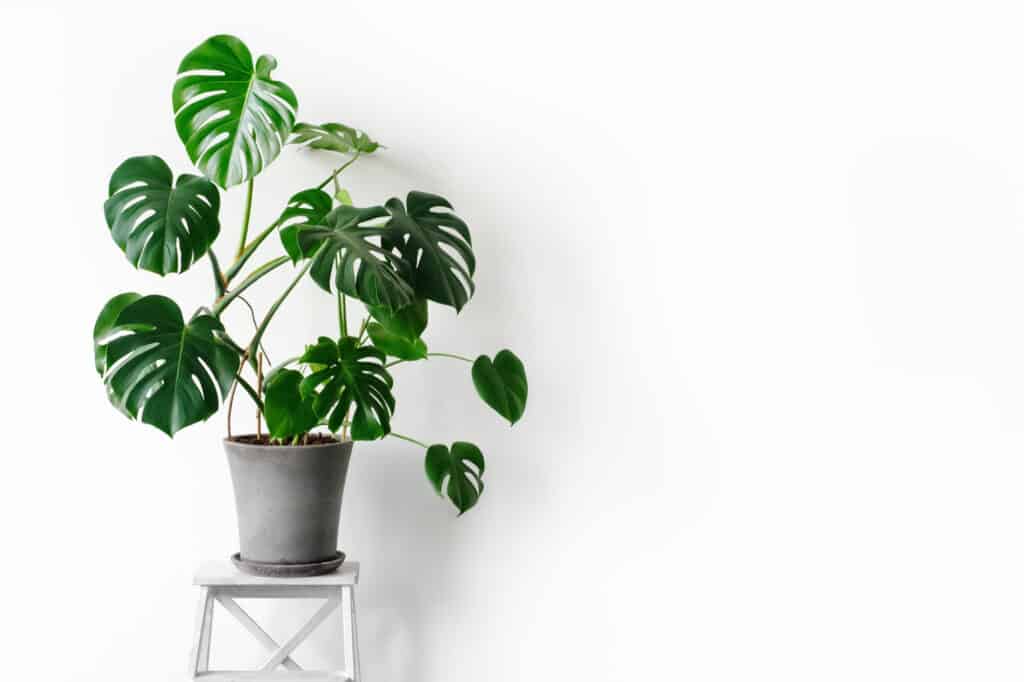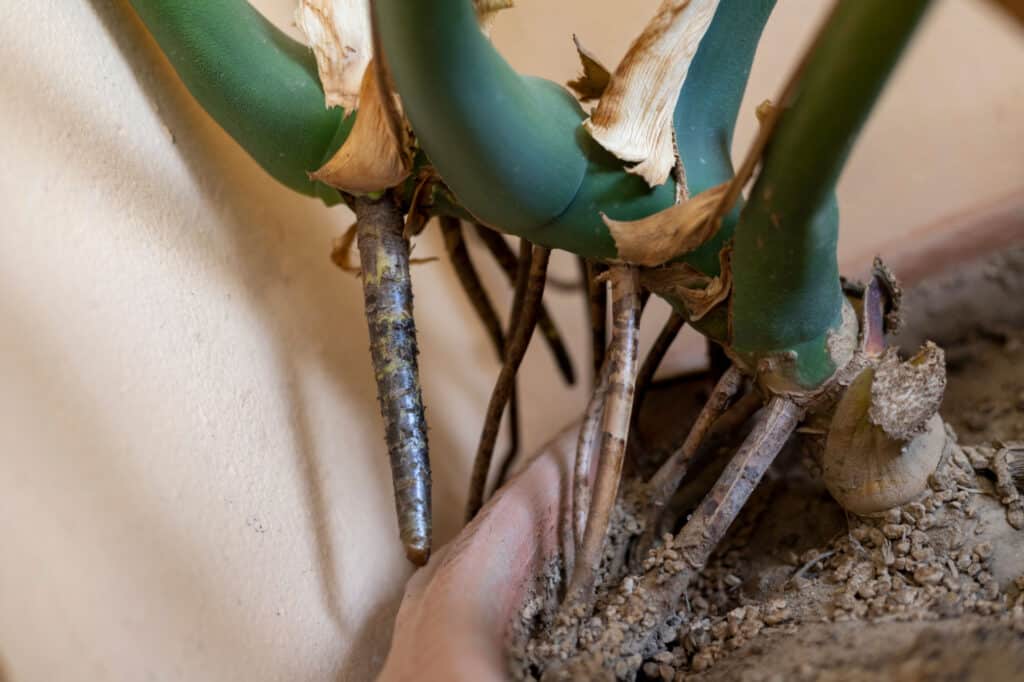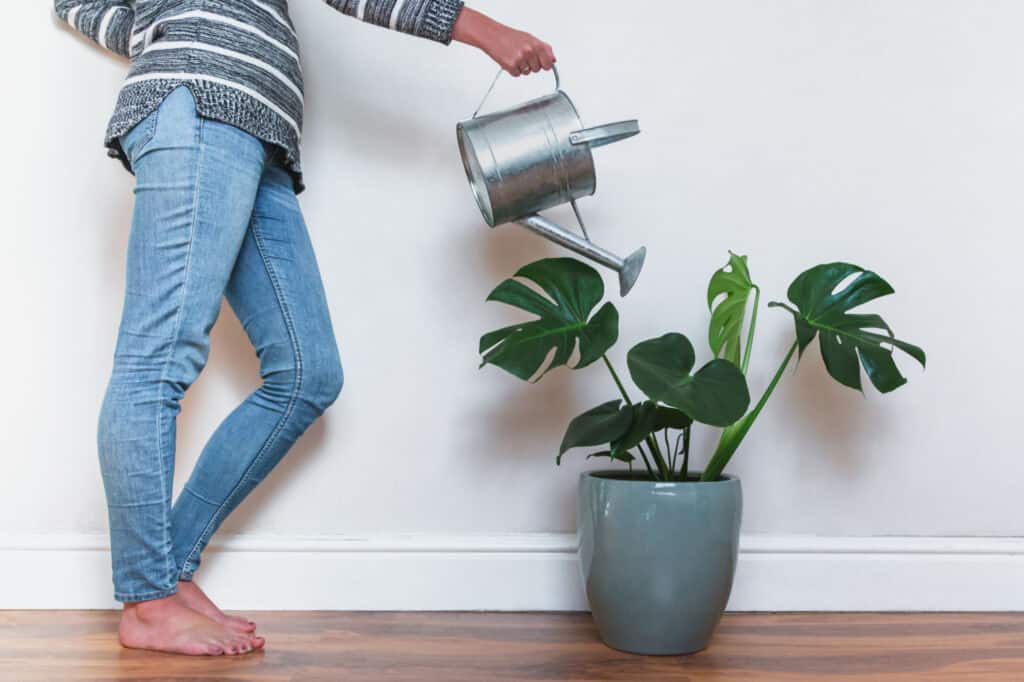Do you know everything involved with growing indoor monsteras? Arguably one of the most popular houseplants around the world, the monstera deliciosa reaches impressive sizes, both indoors and out. It is relatively easy to care for once you know what it needs, but what might some of those needs be and what are some of the most common problems associated with growing monsteras indoors?
In this article, we will tackle everything you need to know about growing indoor monsteras, including all of their basic care requirements. We will go over some helpful tips and tricks to help your monstera thrive indoors, as well as some of the most common problems that occur during this process. Let’s get started and talk all about monsteras now!
Tips for Indoor Monstera Growth

With uniquely splitting leaves, the monstera deliciosa is an extremely popular houseplant.
©Sozina Kseniia/Shutterstock.com
Native to Central and South America, the monstera deliciosa reaches up to 10 feet tall indoors, with large, rubbery leaves. Also known as the split-leaf philodendron or the Swiss cheese plant, monsteras are incredibly popular for their foliage and ease of both propagation and care. Here’s everything you need to know about growing a monstera indoors, a location where this tropical beauty naturally thrives!
Sunlight Requirements
Classified as an understory plant in its natural environment, monsteras prefer bright, indirect light when grown indoors. When grown outside, monsteras thrive in more shade than average, but the filtered light found indoors suits a monstera well. Finding a location with this type of light is only the first step, as you should also make sure this location isn’t in a drafty area of your home. Likewise, be sure to keep your monstera away from any heating or air conditioning vents, as changes in temperatures affect the overall growth of this houseplant.
Water Requirements
Preferring plenty of humidity and tropical conditions, your monstera enjoys consistently moist soil without being too wet. However, most healthy monstera plants can also handle a period of time drying out. Water your monstera at least once a week, depending on the season, and it will appreciate misting or the presence of a humidifier every single day!
Soil Requirements

You may have already noticed some aerial roots growing on your monster plant.
©Bilalstock/Shutterstock.com
For the most part, monsteras do not have any specific soil preferences. However, having an option that drains quickly is the most important part. Be sure to plant your monstera houseplant in a mixture of traditional potting soil and peat or perlite. This will ensure that water does not linger on the roots of this plant, causing root rot and decay as the plant ages. You should also be sure to place stones or other helpful drainage tools at the base of whatever pot you plan on planting your monstera in.
When to Repot
Monsteras do well in a single pot for a while, despite how quickly they grow. They can handle some level of root-bound existence, but repotting is always a good idea to ensure future growth and the overall health of your plant. You can repot your monstera in small increments every year, but repotting will become necessary once you noticed fruits escaping from the bottom of the pot itself.
Common Problems When Growing Monsteras Indoors

Most monstera varieties love plenty of water.
©Francois Louw/Shutterstock.com
Curious about what some of the most common problems might be when growing a monstera plant indoors? Here is everything you should know so that you can take care of your monstera deliciosa plant for years to come!
Pests
Every houseplant faces pests and potential damage from bugs or other insects. Some common end or pests include gnats, mealybugs, spider mites, and even aphids. If you notice more bugs surrounding your monstera plant, you may consider purchasing a gentle insecticide. Follow the care instructions carefully and you’ll no doubt see the infestation subside in no time!
Root Rot
As previously mentioned, root rot is one of the main killers of any plant, particularly monsteras. Proper planting and watering habits will ensure the life of your monstera when it is grown indoors. If you notice the leaves on your monstera changing and growing discolored, they may be suffering from root rot! Allow your plant to dry out, and consider repotting it in a more suitable medium if problems persist.
Root Bound
Monsteras grow quickly and have an intricate root system. Your plant may halt its growth habit if it becomes root bound. While monsteras can handle being root bound for a while, it’s best to not leave your monstera like this for too long, lest you risk root rot! Repot your monstera into a pot that isn’t too much larger than the pot it is currently in, watering deeply once the process is done.
Up Next
- How to Propagate Monstera Plants: 6 Simple Steps
- Monstera Roots: Types and What to Do About Aerial Roots
- 8 Houseplants That Grow in Water
The photo featured at the top of this post is © Francois Louw/Shutterstock.com
Thank you for reading! Have some feedback for us? Contact the AZ Animals editorial team.






